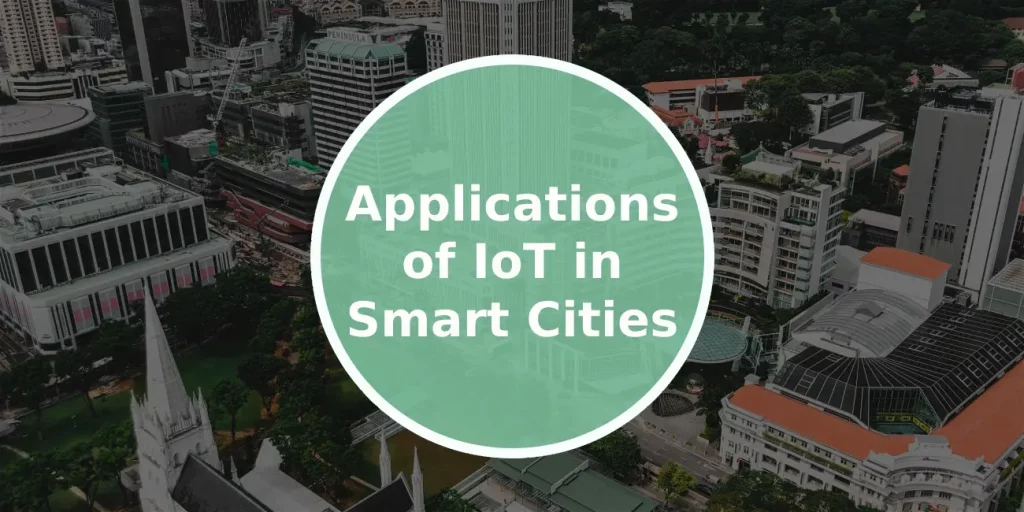The Internet of Things (IoT) is transforming urban spaces into smart cities, revolutionizing how we live, work, and interact with our surroundings. IoT for smart cities refers to the network of connected devices and sensors that collect and share data to improve city operations and services. These technologies enable city administrators to monitor and manage various aspects of urban life more efficiently, from traffic flow and energy consumption to waste management and public safety. By leveraging real-time data and analytics, smart cities can optimize resource allocation, enhance sustainability, and improve the quality of life for residents. IoT applications in smart cities range from smart streetlights that adjust brightness based on traffic patterns to sensors that detect air quality and noise levels. This interconnected ecosystem of devices and data is paving the way for more responsive, sustainable, and livable urban environments.
Top Five Applications of IoT in Smart Cities
Smart Traffic Management
Smart traffic management uses IoT sensors and cameras to monitor traffic flow in real-time. These devices are placed at intersections, on roads, and in parking areas. They collect data on vehicle numbers, speeds, and congestion levels. This information is sent to a central system that can adjust traffic lights to reduce jams and improve traffic flow. For example, if sensors detect a long line of cars at an intersection, the system can extend the green light time to let more vehicles pass. Some cities also use this data to guide drivers to available parking spaces, reducing the time spent searching for parking. Smart traffic management helps reduce travel times, lower fuel consumption, and decrease air pollution from idling vehicles.
Smart Waste Management
IoT technology is revolutionizing how cities handle waste collection. Smart waste bins equipped with sensors can detect when they’re full and need emptying. These sensors measure the fill level of the bin and send this data to waste management teams. This allows for more efficient route planning for garbage trucks, as they only need to visit bins that are actually full. Some smart bins even have compactors powered by solar energy, which can compress the waste to increase capacity. This system reduces the number of collection trips needed, saving fuel and reducing traffic congestion. It also helps prevent overflowing bins, which can lead to litter and health hazards. Overall, smart waste management makes cities cleaner and more hygienic while optimizing resource use. IoT development companies play a crucial role in creating these smart waste management systems, designing the sensors, developing the data analytics platforms, and integrating the various components into a cohesive solution that cities can easily implement and manage.
Smart Street Lighting
Smart street lighting systems use IoT to make city lighting more efficient and responsive. These lights are equipped with sensors that can detect movement and ambient light levels. When there’s no one around, the lights can dim to save energy. When a pedestrian, cyclist, or car approaches, they brighten up for safety. Some smart streetlights also have environmental sensors that can monitor air quality, noise levels, or even help detect gunshots. The lights are connected to a central management system, allowing city officials to control them remotely. This system can quickly identify malfunctioning lights for repair. By adjusting brightness based on actual needs and quickly fixing issues, smart street lighting significantly reduces energy consumption and maintenance costs while improving public safety.
Smart Water Management
IoT plays a crucial role in managing water resources in smart cities. Sensors placed throughout the water supply system can monitor water quality, detect leaks, and measure water pressure. These sensors send real-time data to water management authorities, allowing them to quickly identify and respond to issues. For example, if a sensor detects a sudden drop in water pressure, it could indicate a pipe burst. The system can automatically alert repair teams and even shut off water supply to that area to prevent water waste. Smart water meters in homes and businesses can track water usage more accurately, helping to conserve water and detect unusual consumption patterns that might indicate leaks. This technology helps cities reduce water waste, ensure water quality, and manage this vital resource more efficiently.
Smart Energy Grids
Smart energy grids use IoT to create a more efficient and reliable power supply system. These grids have sensors throughout the electricity network that monitor power usage, detect outages, and even predict potential failures before they happen. Smart meters in homes and businesses provide real-time data on energy consumption, allowing both users and utility companies to manage energy use more effectively. The grid can automatically adjust to changes in demand, redirecting power where it’s needed most. For example, during a heatwave when air conditioner use spikes, the grid can prioritize power distribution to prevent blackouts. Some smart grids also integrate renewable energy sources like solar panels and wind turbines, balancing these variable energy sources with traditional power plants. This system improves energy efficiency, reduces power outages, and helps cities transition to more sustainable energy use.
Conclusion
These IoT applications work together to make cities more efficient, sustainable, and livable. By collecting and analyzing data from various sources, city officials can make better-informed decisions and respond more quickly to urban challenges. Residents benefit from improved services, reduced costs, and a higher quality of life. As IoT technology continues to advance, we can expect even more innovative solutions to emerge, further transforming our urban spaces into truly smart cities.
